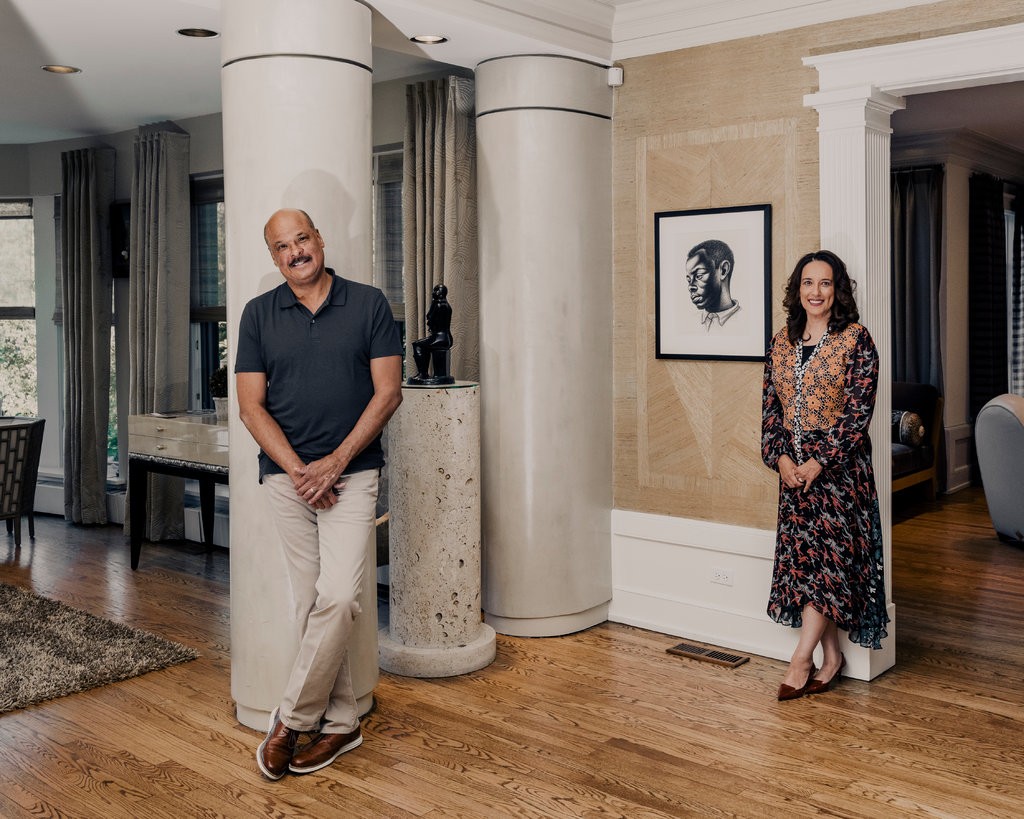Denise Gardner, a collector, and philanthropist is the next chairman of the Art Institute of Chicago board.
Perhaps she will be the first African American and the first woman to lead the board of a major U.S. art museum.
The statement says that she is honored to accept this role and looks forward to working with the institution’s management and staff to fully realize her commitment to ensuring that people of all ages from across the Chicago area and beyond, especially children, experience the Art Institute of Chicago as a place where they are expected.
Denise Gardner, 66, has worked at the Art Institute for nearly 30 years, including 15 years as a trustee and five years in her current role as vice-chairman of the board. Robert M. Levy, the board’s current chairman, will remain on the board after Gardner takes over in November.
They sold the company over the next decade and have since turned their attention to collecting and charity. Their collection of over 130 works is dedicated to contemporary and contemporary black artists, including works by Henry Ossawa Tanner, Carrie May Weems, Sam Gilliam, Ed Clark, Amy Sherald, Nick Cave, and Elizabeth Catlett.
Denise Gardner has also advocated for under-represented artists from her place at the Art Institute. Denise Gardner was the lead sponsor of the 2018 Charles White retrospective and has funded the acquisition of the museum’s drawing and contemporary art departments over the years.
They Built a World-Class Collection of Black Artists’ Work

Gary and Denise Gardner, who created one of the most outstanding collections of black artists, added works by Lorna Simpson, Bethany Collins, and Candida Alvarez.
The popularity of black artwork has skyrocketed in recent years as curators and collectors redefine their place in the canon. Chicago-based collectors Denise Gardner and her husband Gary have spent nearly four decades creating one of the world’s foremost exhibitions of black artists.
Their collection contains no less than 130 works offering a broad perspective on contemporary black art, from pioneers such as Henry Ossawa Tanner to modernists such as Charles White and Norman Lewis. However, customization can be used even in existing collections, according to Denise Gardner, who has recently focused on adding works by women from the African diaspora.
Denise Gardner, chairman of the Art Institute of Chicago board, said that one day she walked into a room in a house where she had long exhibited the masters of the collection and realized that every artist was black.
When she bought several large pieces of black women, she decided to add these artists to the main room, thereby allowing black women to share the spotlight. Denise Gardner told about three artists she and her husband added to their collection.
Lorna Simpson, “Mind Reader,” 2019

Emerging in the 1980s as a pioneer of conceptual photography, Ms. Simpson created collages of black women she found in vintage magazines such as Ebony and Jet, often provoking racism or sexism wherever she saw it.
In recent years, she has added pictorial elements to works such as Mind Reader by printing images on fiberglass and then overlaying ink on top. Ms. Simpson’s work is owned by more than 45 museums.
Ms. Simpson’s work is owned by more than 45 museums. Several works in Ms. Simpson’s 2019 Darkening exhibition at the Hauser & Wirth Gallery in New York, where Ms. Gardner bought Mind Reader, have since sold at art fairs for approximately $ 425,000.
Denise Gardner said that the work she received is partly a photograph because it uses a found image of a woman with a fleece-like the Supremes, but it is also partly a painting because the artist washed the woman in ink. She also added that there is such a quiet power in her, and when she looks at him, she becomes quite emotional. Gardner suggests that the artist also possesses this power. There is moodiness and storm in this work.
Bethany Collins, “I am for you (You’re a Grand Old Flag),” 2018

Ms. Collins explores language politics, partially erasing or burning phrases in everything from classical poetry like Homer’s Odyssey to patriotic songs. The artist lives and works in Chicago. She burst onto the art scene while working at the Studio Museum in Harlem.
Then, during Art Basel Miami Beach, she recruited choral groups to perform 100 different versions of the 1831 song “My Country, ‘Tis of Thee,” including politically motivated lyrical changes. She also showed a hymnbook, the pages of which were scorched so that some of them crumbled when people leafed through it.
Ms. Collins’ Chicago gallery Patron has sold her work for between $ 10,000 and $ 65,000.
The artist overlays text on most of her paintings. Denise Gardner notes that she has two of them, and from a distance, they look like clouds or spots. But when a viewer gets closer, he sees that they are individually drawn.
Candida Alvarez, ‘dadadahlia,’ 2005-08

This 65-year-old artist creates kaleidoscopic abstractions that conjure up everything from shards of stained glass to hazy shapes inspired by her favorite Renaissance paintings.
She has gained a large following since returning to school at the age of 40 and earning her Master of Fine Arts from Yale School of the Arts, from which she graduated in 1997.A year later, she began teaching at the School of the Art Institute of Chicago. And soon, she had her first solo exhibition at the Monique Meloche Gallery in Chicago.
The artist’s gallery said that prices range from $ 4,500 to $ 45,000.
Denise Gardner has collected her artworks for the past several years. She paints large, vibrant, intricate canvases that refer to the Dada art movement, but also large florals. Denise Gardner says she admires how Candida painted, even when she raised her son and then started teaching at the Art Institute.
Denise Gardners owns some works by Charles White. The artworks are hanging in their home in the Beverly neighborhood on the far South Side here.
Charles White (1918–1979) grew up in Chicago and attended the School of the Art Institute before embarking on a long career that took him nationwide to depicting monumental black figures. His graphite drawing of a boy “Untitled” (1950) takes pride of place in the central hall of the Gardners.
The Gardner family exhibit over 100 works of art at home – some of them rented – and many of them hang in a large basement gallery, which they have modernized as their collection grows. Their focus is exclusively on African American artists.

Gary and Denise Gardner have been featured in the New York Times for an inspiring collection of African American artists performed at their South Side home. With over 100 exhibits on display, as well as some on loan, the Gardners are champions of both current local creatives and creators of the past.
Denise Gardner, who serves on the SAIC Board of Governors and the Art Institute of Chicago Board of Trustees, was a strong supporter and sponsor of the current Charles White retrospective (SAIC 1937–1938) at the museum. Their constantly growing collection features the work of many teachers and alumni of the school.

Although the human figure dominates the collection, many abstract pieces can also be seen here. And the Gardners differ from other collectors in that they mix the work of living artists with their historical precedents.

























